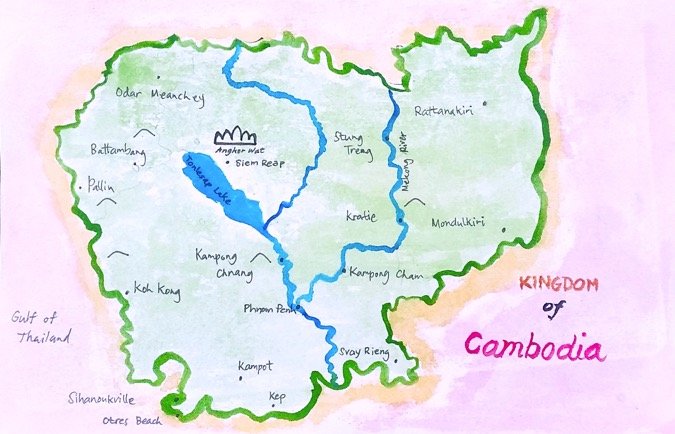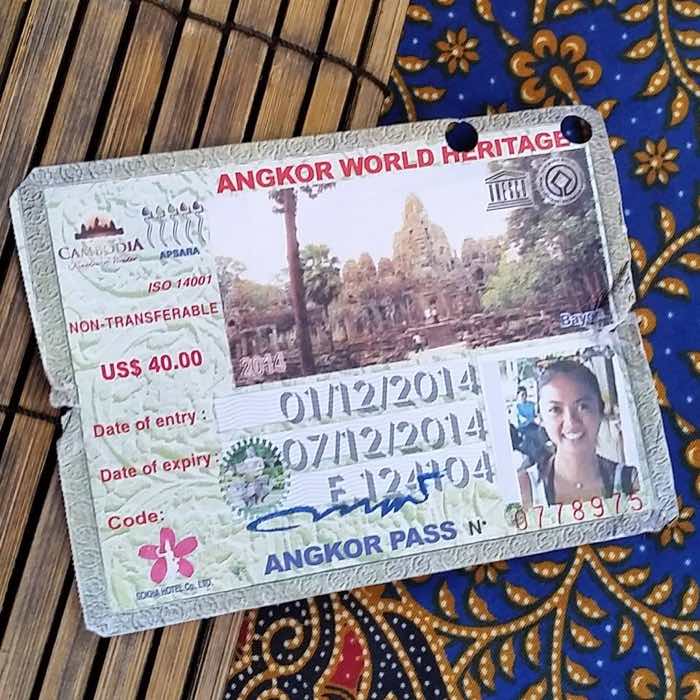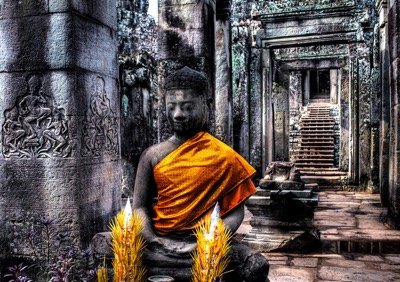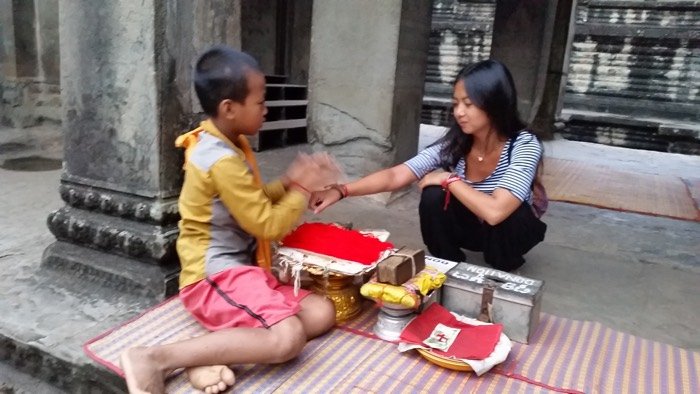Having realistic expectations for your first visit to Angkor Wat, Cambodia will help you prepare for a smooth sailing unforgettable visit. The Angkor Archeological Park stretches over some 400 square kilometers so you will need a few days to leisurely explore this magnificent area.

9 Tip For A Great Angkor Wat Experience
1. Watch some Angkor Wat related documentaries before your visit and splurge on a local tour guide. You will want to know what exactly you are looking at. Every piece of stone, every carving has an incredible story to tell. If you walk through the temples without knowing the history, you might get “templed-out” really fast.
2. There are seven different temples in the Angkor Wat complex and it will take you at least two full days to explore. I suggest purchasing a three day pass that’s valid for one week. It’s well worth your $40. Don’t get caught by the ticket guards without it!
3. The best way to experience the local surrounding area of Angkor Wat is to get a tuk-tuk or a motorcycle driven carriage. The drivers speak enough English to communicate well with visitors so ask for recommendations on where to eat.

4. If you’re feeling energized, hire a bike and cycle around the beautiful town of Siem Reap. Best to stick with a small group for safety reasons. There are no motorbikes or car rentals around this area.
5. The circuit tours are pretty much standard. Each one goes to the Angkor Wat and three other temples of your choice. There is a sunrise tour that leaves at 5:00 am and a sunset tour that leaves at 1:00 pm every day. Try to do each tour on a different day.
6. Expect thousands of tourists at the Angkor Wat taking the same panoramic photo by the river. Take a few snaps, then give up your spot to someone else as a courtesy. Monks will honor you with a red or orange bracelet as a sign of blessing. You are expected to give at least $1 of donation for each bracelet.
7. The noon time heat will get to you! Since you are visiting sacred Hindu temples, there is a strict dress code for both men and women. Keep your chest, shoulders, stomach and knees covered. Breathable trousers, a light shirt, and chic sandals are recommended. Bring along a light cardigan and just layer on as needed. FYI, See-through fabrics, casual flip-flops and skin-tight yoga pants that reveal all your curves are considered inappropriate.
8. Posing for photos in a compromising position may offend the locals who are there to pray. Show off your Nataranjasana, a standing split for the beach! Strangely, tourists have been caught taking nude photos inside the temple’s sacred walls as well. This may lead to thousands of dollars worth of fines, deportation and internet shaming!
9. Ask your tuk-tuk driver to take you to a day spa after a long day’s tour. An hour of relaxing massage is just under $10!
About the Author and Photographer
 Adi is a thirty-something Filipina yogini and wanderer at heart. She escaped the ruthless corporate world in Manila, then sold and gave away most of her possessions when she moved to a tiny surf island in Indonesia. She rock climbed all over Southeast Asia before taking the big leap to Latin America. She draws colourful mandalas when she needs a break from social media. Her biggest weakness has always been bacon. She is currently falling in love and volunteering her way throughout Costa Rica.
Adi is a thirty-something Filipina yogini and wanderer at heart. She escaped the ruthless corporate world in Manila, then sold and gave away most of her possessions when she moved to a tiny surf island in Indonesia. She rock climbed all over Southeast Asia before taking the big leap to Latin America. She draws colourful mandalas when she needs a break from social media. Her biggest weakness has always been bacon. She is currently falling in love and volunteering her way throughout Costa Rica.







